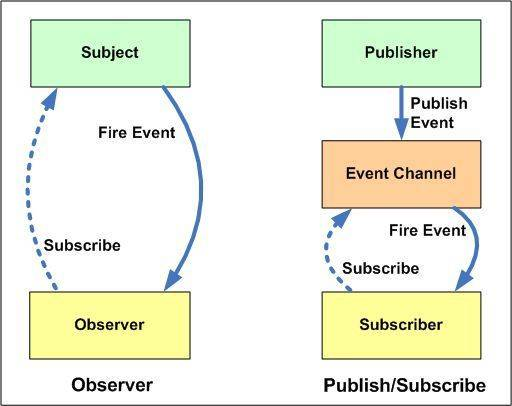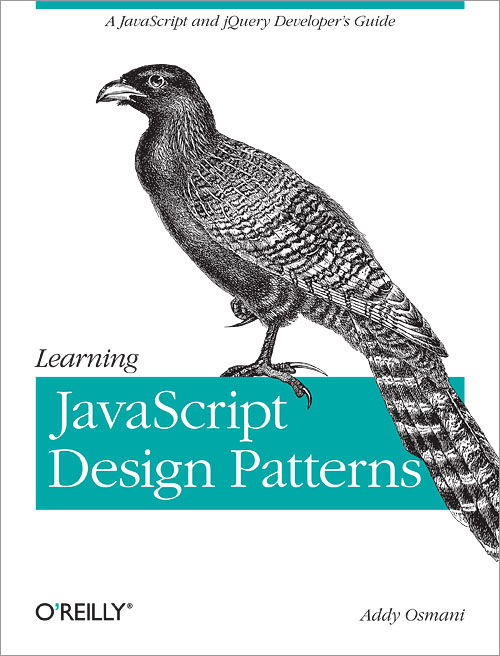本文说一下 EventEmitter,比较简单,可以直接看代码。
发布 + 订阅
DOM 的事件机制就是发布订阅模式最常见的实现,这大概是前端最常用的编程模型了,监听某事件,当该事件发生时,监听该事件的监听函数被调用。
发布订阅模式,阮一峰在《Javascript 异步编程的 4 种方法》,中:
我们假定,存在一个"信号中心",某个任务执行完成,就向信号中心"发布"(publish)一个信号,其他任务可以向信号中心"订阅"(subscribe)这个信号,从而知道什么时候自己可以开始执行。这就叫做"发布/订阅模式"(publish-subscribe pattern),又称"观察者模式"(observer pattern)。
感兴趣的可以去看看,下图是我平时在用的一个实现。(重点看)
class EventEmitter {
constructor() {
this._events = Object.create(null);
}
on(type, handler) {
(this._events[type] || (this._events[type] = [])).push(handler);
}
off(type, handler) {
if (this._events[type]) {
this._events[type].splice(this._events[type].indexOf(handler) >>> 0, 1);
}
}
once(type, handler) {
let fired = false;
function magic() {
this.off(type, magic);
if (!fired) {
fired = true;
handler.apply(this, arguments);
}
}
this.on(type, magic);
}
emit(type) {
let payload = [].slice.call(arguments, 1);
let array = this._events[type] || [];
for (let i = 0; i < array.length; i++) {
let handler = this._events[type][i];
handler.apply(this, payload);
}
}
}
export default EventEmitter;
Vue 中非父子组件组件通信
在 Vue 中不同组件之间通讯,有一种解决方案叫Event Bus,这其实就是发布订阅模式的实现,非常简单好用。
// bus.js
export default new Vue();
// 使用$on监听
import Bus from '../bus.js';
export default {
created(){
Bus.$on('fulfilled',text=>{
this.status = 'fulfilled'
})
}
}
// 使用$emit触发事件
fetch('/data.json).then((res)=>{
return res.json()
}).then(()=>{
Bus.$emit('fulfilled','已成功')
}).catch(()=>{
Bus.$emit('resolved','出错');
})
Vue 事件相关接口:
emit,
off。
使用 Event Bus 进行跨组件消息传递很棒,但是,当事件非常多的时候,Event Bus 上的事件就会难以维护,这与使用全局变量一样一个道理。变量能局部的,就尽量不要放到全局,同样 Event Bus 上的事件也是越少越好。
观察者模式
简单创建一个能够添加、删除和提醒观察者的目标。
class Subject {
constructor() {
this.observer_list = [];
}
add_observer(obj) {
this.observer_list.push(obj);
}
remove_observer(obj) {
for (let i = 0; i < this.observer_list.length; i++) {
if (this.observer_list[i] === obj) {
this.observer_list.splice(i, 1);
}
}
}
notify() {
let args = Array.prototype.slice.call(arguments, 0);
for (let i = 0; i < this.observer_list.length; i++) {
this.observer_list[i].update(args);
}
}
}
代码会说话,我就不解释了,实在是没什么好解释的,如果一定要说点什么:我真有点不好意思打原创的标。
发布订阅模式 与 观察者模式
有时候人们会简单的把发布订阅模式和观察者模式混为一谈,比如上面的一峰老师,其实两者还是有些区别的。至少它们的英文名称不同:Observer vs Pub-Sub。
《Learning JavaScript Design Patterns》一书这样说:
“While the Observer pattern is useful to be aware of, quite often in the JavaScript world, we’ll find it commonly implemented using a variation known as the Publish/Subscribe pattern.” 虽然 Observer 模式非常有用,但是在 JavaScript 的世界中,它更多的以一种被称为发布/订阅模式的变种来实现
由上可以理解为,发布/订阅模式是观察者模式的一种变形,两者区别在于,发布/订阅模式在观察者模式的基础上,在目标和观察者之间增加一个调度中心。

观察者模式是由具体目标调度,比如当事件触发,Subject 就会去调用观察者的方法,所以观察者模式的订阅者与发布者之间是存在依赖的。
发布/订阅模式由统一调度中心调用,因此发布者和订阅者不需要知道对方的存在。
详细内容,感兴趣的同学可以看下面这本书:
